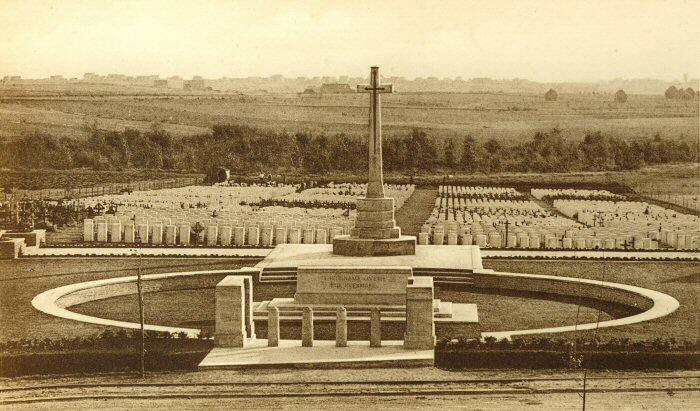Harry Gray
Date of birth: 1896
Date of death: 4.10.1917
Area: Outwood
Regiment: King's Own Yorkshire Light Infantry
Family information: Son of Joseph and Susan Gray of Prospect Place, Bolus Lane, Outwood
Rank: Private
Service number: 29954
War Service
Due to the absence of his service record it is not known whether Harry enlisted, or was conscripted into the army during the First World War. However, he was posted to the 10th Battalion, Kings Own Yorkshire Light Infantry. The 10th (Service) Battalion was formed in September 1914, part of Lord Kitchener’s Volunteer Army. Along with the 9th Battalion, Kings Own Yorkshire Light Infantry, the 10th Battalion was designated part of 64th Infantry Brigade, 21st Division.
The 21st Division arrived in France on 12th September 1915 and two weeks later was in action at the Battle of Loos. On arrival in the battle area, the 64th Brigade was placed in Divisional Reserve, with orders to remain in their trenches. However, as the British troops were pushed back from Hill 70, these trenches, became involved in the fighting. During the afternoon, the 9th and 10th KOYLI moved forward and advanced to counter-attack the enemy, towards the Loos-Hulloch road. They were cut down from the flanks by machine-gun and shrapnel fire and forced to withdraw to their original line. The 10th KOYLI incurred 151 casualties during this action.
On 1st July 1916, the 21st Division was in action on the first day of the Battle of the Somme, with the 10th KOYLI engaged at Fricourt, where the battalion sustained 462 casualties. After some re-organisation, the 21st Division returned to the Somme battlefield in September 1916. The 10th KOYLI was in action during operations at Gueudecourt, on both the 16th and 25th September, when further casualties were sustained. Both the 9th and 10th KOYLI were subsequently withdrawn, in Brigade, to the Bethune area.
In April 1917, the 9th KOYLI, in Brigade, was involved in an attack, on the Hindenburg Line, near the Henin-Heninel road, near Arras. The attack made through deep snow, was stopped at the first trench line, the 9th KOYLI having incurred 182 casualties.
The third Battle of Ypres had been in progress some weeks when the 21st Division was deployed to the battlefront. On 4th October 1917, the 10th KOYLI was in support of an attack towards Reutel, their orders were to pass through the 9th KOYLI and occupy the village. The battalion advanced at 06.00 hrs. and was soon mingling with men from other battalions, who had been slowed down when skirting the swampy ground. Many casualties were sustained, but the first objective was taken. Because of the dwindling numbers, the 10th KOYLI formed a defensive line about 150 yards in front of the first objective. The battalion remained in these positions and repulsed a number of counter-attacks, until relieved on the night of the 6th October, when they returned to Zillebeke. The 10th KOYLI incurred over 300 casualties during the operation, one of whom was Private Harry Gray, killed in action on 4th October 1917.
Private Harry Gray was initially buried near where he fell, but after the armistice, his grave was moved to Hooge Crater Cemetery. This cemetery was begun in October 1917 and at the time of the Armistice contained 78 graves, in what is now Plot I. After the Armistice, graves were brought in from the battlefields of Zillebeke, Zantvoorde and Gheluvelt and other smaller cemeteries. There are now 5923 Commonwealth servicemen of the First World War buried, or commemorated, in the cemetery. Of these, 3579 are unidentified.
Family Life
This casualty is believed to be Harry Oastler Gray, born on 6th July 1896, the son of Joseph Gray and his wife Susan, formerly Brown, of Prospect Place, Bolus Lane, Outwood. His parents, Joseph and Susan, had previously had another son named Harry, who died aged 7 years, in 1887, when the family lived at Lawns Lane, Outwood. Harry Oastler Gray was baptised on 5th August 1896, at St Mary Magdalene Church, Outwood. His father, Joseph Gray, worked in the coal mines, where he performed various duties, including banksman, corporal and screener. When Harry left school he obtained employment at Lofthouse Colliery, where his father was employed. An older brother, George, was working at Parkhill Colliery.
 Hooge Crater Cemetery
Hooge Crater Cemetery

